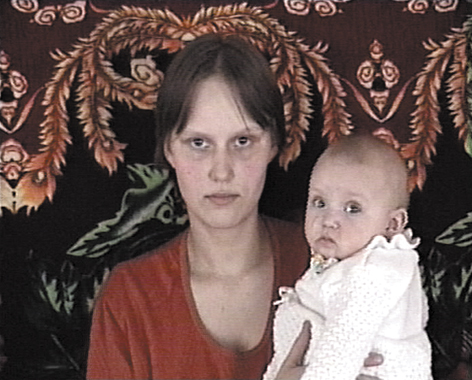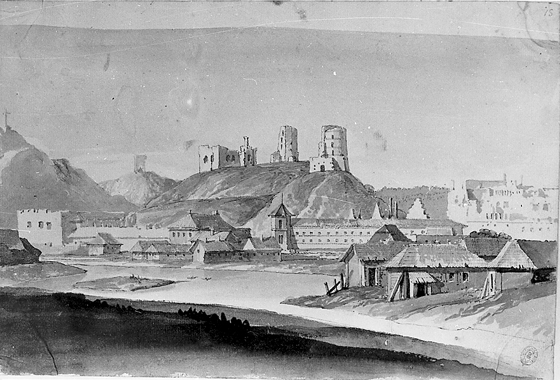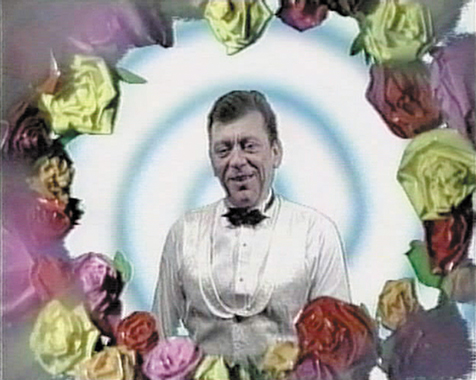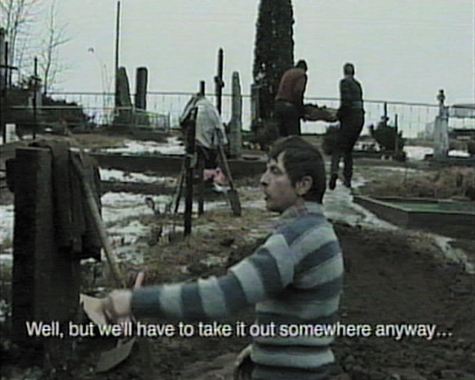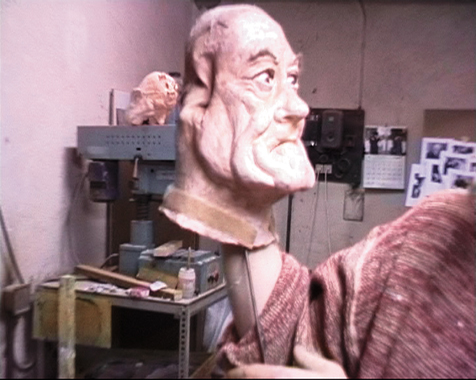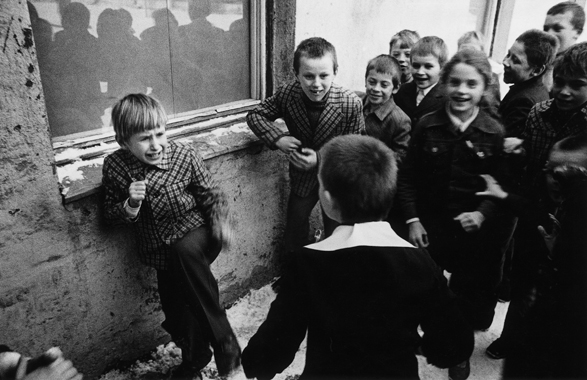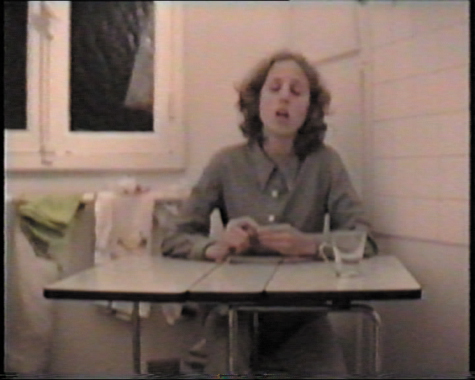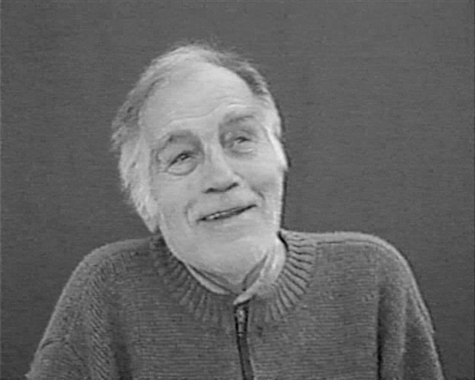
Artists: Academic Training Group, Kestutis Andrasiunas, Romualdas Augunas, Arunas Baltenas o Vladas Drema (1910-1995), Arunas Gudaitis, Haraldur Jonsson (Iceland), Linas Jablonskis, Donatas Jankauskas, Evaldas Jansas, Patricija Jurksaityte, Arvydas Kazdailis, Luisa Lambri (Italy), Dainius Liskevicius, Gintaras Makarevicius, Ieva Martinaitytė-Mediodia, Darius Miksys, Mindaugas Navakas, Romualdas Pozerskis, Liutauras Psibilskis, Marius Puskunigis, Arturas Raila, Egle Rakauskaite, Romualdas Rakauskas, Jurgita Remeikyte, Alma Skersyte, Franciszek Smugliewicz (1745-1807), Irma Stanaityte, S&P Stanikas, Aloyzas Stasiulevicius, Laura Stasiulyte, Vaclovas Straukas, Antanas Sutkus, Mykolas Salkauskas, Vilma Sileikiene, Virgilijus Sonta (1952-1992), Gintautas Trimakas, Nomeda & Gediminas Urbonas, Sofija Urbonaviciute – Subaciuviene (1915-1980), Petras Velicka (1911-1990), Rimaldas Viksraitis, Vision. International People Group, Darius Ziura.
Curator: Anders Kreuger
This is the fourth edition of Lithuanian Art, a biennial organised by the Vilnius Contemporary Art Centre. For the first time, the CAC has invited a foreign curator to organise this national art event. Anders Kreuger, a Swedish freelance curator and former director of NIFCA in Helsinki, has made his own selection of new and existing works by some 40 authors of different generations. Self-esteem. Lithuanian Art 01 also includes archival material (film and photography) and works borrowed from Lithuanian museums.
The exhibition is not intended as a representative survey of the Lithuanian contemporary art scene, nor as an illustration of national self-esteem. Rather, it is an attempt at visual research, at understanding how the face of the nation is being imagined today. In the “new” Lithuanian society, how visible is the country‘s traumatic (and often insufficiently processed) recent history? How do collective self-images emerge as “pictures?” Can these self-images accommodate different, co-existing lifestyles? The exhibition also investigates, from the curator‘s outside position, how Lithuanian self-images have developed over time, particularly in photography and film. The curator has collaborated closely with the Lithuanian Image and Sound Archive and the Union of Art Photographers.
Although essentially a positive notion, savigarba (“self-respect”) provokes ambiguous reactions and emotions among native speakers of Lithuanian. With large parts of the population continuously dissatisfied, is it correct – or even safe – to express confidence in your own Self? On the other hand, can self-assertion be anything more than a defensive compensation for low self-esteem? Can love and respect for your Self exist without its mirror-image, suspicion and contempt for the Other? Savigarba seems to span the distance between the individual and the collective, between “I” and “we.” Self-esteem seems to evoke these ambivalences and contradictions better than a more precise English translation would.
The exhibition itself is deviced for an audience that needs no lingustic or cultural translations to decode the works on display. In this sense, Self-esteem is a decidedly local event, although the themes it addresses are global. The exhibition attempts to create an open visual narrative. In response to the different approaches and practices of the participating authors – and to the spatial characteristics of the CAC building, originally intended as a venue for exhibiting Soviet Lithuanian economic achievement – Self-esteem is divided into sub-sections:
The Introduction makes use of the multi-purpose spaces that introduces the visitor to the CAC building – the spot-lit outdoor arcade, the lobby and staircase, the cloakroom area and the cellar. The works shown are: Reflection, a text/sound piece by Icelandic artist Haraldur Jonsson (b. 1961; one of the two foreign guests in the exhibition), Shorthand, a diaristic video by Evaldas Jansas (b. 1969), a video documentation of a visit to the Parapsychology Fair at the Vilnius Sports‘ Palace last autumn by Darius Miksys (b. 1969) and the Green Zone painting by New York-based Ieva Martinaityte -Mediodia (b. 1968). The display of contemporary Lithuanian chocolate box covers selected by Patricija Jurksaityte (b. 1968) and Marius Puskunigis (b. 1964) testifies to the neo-baroque, manipulative use of “national self-esteem” in mainstream commercial visual culture. The documentary film Ceramics 71 tells the story of another exhibition in this very building, exactly 30 years ago.
The ground floor exhibition hall hosts a selection of works by different authors, all including images of Man – his body, his ages, his ways of living a “normal” life. There is a series of paintings of Mother and Child that Mykolas Salkauskas (b. 1935) has worked on throughout the 1990s, and three 1970s photographs of teenagers by Vaclovas Straukas (b. 1923). The sculptural object Border Involute (1,94 m2) by Arunas Gudaitis (b. 1973) is a three-dimensional representation of the author‘s entire skin surface. Another Breathing, a new video work by Egle Rakauskaite (b. 1967) is based on extensive interviews with elderly people in Alaska and Lithuania.
On the first floor, the Stage section offers art that is either performative in itself or refers the viewer to the performative arts. These themes dominate the cinema hall – with Spaces, photographic images of empty, fully lit theatre interiors in Lithuania by Dainius Liskevicius (b. 1970), Mild, a performance documentation on video by Arunas Gudaitis and Men and Women! Muscat, Sultanate of Oman, Winter 2001, a photographic piece by S&P Stanikas (b. 1961 and 1962) along with a piece of “ready-made art”, the Rosy Dream Ball promotional video from the cosmetics company Vision. International People Group. Palanga by Darius Ziura (b. 1968) is an extract from the over 45 hours of video tape that shows the everyday routine of a popular Baltic seaside resort. The section continues in the George Maciunas Fluxus cabinet – with Echo, Echo, a video by the Academic Training Group (Giedrius Kumetaitis, b. 1969; Mindaugas Ratavicius, b. 1970; Simonas Tarvydas, b. 1968) that features the legendary musical entertainer Stasys Povilaitis. A temporarily walled-off working space next to the panorama windows in the upper lobby becomes the “office” for a collaborative work-in-progress by Jurgita Remeikyte (b. 1973), Alma Skersyte (b. 1975), Irma Stanaitytė (b. 1972) and Vilma Sileikiene (b. 1970). The four artists will carry out interventions and interactions with the exhibition audience, and exhibit their own work for the duration of Self-esteem.
Pictures is an exhibition within the exhibition – hung around the inner yard on the first floor – which tries to pinpoint visual manifestations of self-esteem in Lithuanian art photography. These are the kind of images that show people in their “natural habitat” (with or without posing). The seemingly uniform black-and-white photographic medium in effect conveys a wide variety of co-existing lifestyles and attitudes. There are the travel pictures – notably the Friendship Moments in the Congo series from 1978 – by Romualdas Augunas (b. 1938) and the deliberately static documentary portraits in the Neighbours 1998 series by Arunas Baltenas (b. 1956). The recent images by Romualdas Pozerskis (b. 1951) show the last traces of the vanishing ethics of the provincial lesser nobility and clergy. Romualdas Rakauskas (b. 1941) captures threateningly aggressive, inarticulate faces on the peripheries of contemporary life. In his Last School Bell series, Vaclovas Straukas conveyed the semi-staged, semi-sincere confidence and expectation of 1970s Soviet Lithuanian youngsters. These images travel remarkably well through time, just like the iconic moments of individuality in a collectivist environment portrayed by Antanas Sutkus (b. 1939). The surviving images by Virgilijus Sonta (1952-1992) can be read as aestheticised documents of private life. Rimaldas Viksraitis (b. 1954), author of the Grimaces of a Tired Village series, performs visual experiments with varying degrees of degradation and degeneration in the life of rural alcoholics.
On one of the walls of the darkened north exhibition hall we find the Programme Directions for Native Region Study Groups, a pedagogical tool for the country‘s schools proposed by the Native Region Study Association in 2000. This ideological/bureaucratic text serves as a comment to the artworks in the Earth section, which in different ways touch upon the phenomenon of the “small world.” Nation in a Shell by Donatas Jankauskas (b. 1968) is a re-mix of a Japanese animated film with a new soundtrack in the Samogitian version of Lithuanian, increasingly promoted as a separate language. Monuments (Landscapes) by Liutauras Psibilskis (b. 1969) projects snapshots of familiar-looking landscapes, where it is all but impossible to trace any local specificity. . . . forever lacking and never quite enough . . . is a new work by Arturas Raila (b. 1962), an “artist‘s cut” of archival newsreels from the different occupations of Lithuania in the 1940s. The material is used courtesy of the Lithuanian Image and Sound Archive. Gustoniai is a new work by Darius Ziura: 60 one-minute video portraits of inhabitants in the village with the same name.
The big hall of the CAC is divided into three equal parts. In the northern third, there is a generous display of serial images by various artists, all relating to the Capital. But this is not the romantic, melancholy environment that has inspired so many artists. The fluid ink drawings by Franciszek Smugliewicz (1745-1807) are almost the only surviving documentation of the architecture that symbolised the might of the Grand Duchy of Lithuania and its capital – the royal palace, the tribunal court, the city gates. Sofija Urbonaviciute-Subaciuviene (1915-1980) walked the streets of the emptied Vilnius ghetto in the summer of 1944, camera in hand. Petras Velicka (1911-1990) was an accomplished amateur photographer, documenting the life of provincial families who moved into the capital in the first post-war years. This section is dominated, however, by utopian, futurist images of the city. In the late 1920s, Vladas Drema (1910-1995) produced his prophetic watercolour vision of Vilnius in the Year 2000. In 1972-1985, Antanas Sutkus worked on the series Lithuania from a Bird‘s Eye. Some of these images of concrete suburbs and highway crossings echo the paintings and drawings that Aloyzas Stasiulevicius (b. 1931) made in the 1960s and 1970s. Vilnius Notebook, a series of zincographs by the sculptor Mindaugas Navakas (b. 1952) is a well-known re-interpretation of the capital‘s cityscape. The photographer Gintautas Trimakas (b. 1958) has imagined Vilnius from unexpected points of view. In 1999, the Italian artist Luisa Lambri (b. 1969) photographed late modernist architecture in Vilnius. These images, from the Electric City series, are now exhibited for the first time. Darius Ziura shows Milky Way, rotating views of peripheral city areas, filmed from the TV tower restaurant last winter.
In the walled-off middle third of the big hall, the Chronicle section brings together ambiguously “cosmopolitan” artistic practices. S&P Stanikas continue their project of combining their own photographic image – Aeroplane of Dreams – with fragments from the poetry of Lenin Prize laureate Eduardas Miezelaitis (1919-1997). Linas Jablonskis (b. 1959) presents two drawings from his i series, one of which is a reproduction in which the original format has been distorted. Darius Miksys shows Focus On the Girl, a compilation of video portraits of young girls. Kestutis Andrasiunas (b. 1973) has commissioned and selected artists‘ statements for the Anti-OSF Banner Campaign, criticising the outlook of the Open Society Foundation created by Hungarian-American billionaire George Soros. In a specially built screening space, a selection of Lithuanian short films from the State Image and Sound Archive is continuously shown. These are “promotional” trailers about the Lithuanian Soviet Socialist Republic, “educational” features about Soviet Lithuanian culture (about stained-glass windows, poetry, visual art and functionalist architecture) and “investigative” films from the period of political change in the country, after 1988.
The Country section in the southern third of the big hall is dominated by two painted images. More than any other artist, Arvydas Kazdailis (b. 1939) has contributed to the visual design of Lithuania‘s contemporary heraldry. For the exhibition, the Reconstruction of the Historical State Flag, which is so far a proposal by the artist, is executed as a wall painting. Migratory Neurogenesis is a specially commissioned floor-based painting installation by Ieva Martinaitytė-Mediodia. The title refers to the newly discovered process of brain-cell regeneration in animals and humans, taking place under migratory, transitional conditions. Liutauras Psibilskis exhibits Landscapes (Monuments), three decidedly neutral, indeed almost non-descript, photographic views of the re-constructed Lithuanian national liberty monuments in Kaunas. Laura Stasiulyte (b. 1977) shows Intention to Remember, a video in which she sings and recites such extracts of Lithuanian-language folklore and literature as she can remember from her school education. In the corridor that connects the southern and northern thirds of the big hall, there are drawings by Arunas Gudaitis that play on the topographical and psychological images of Lithuania.
Life is a collection of four installations that are not thematically linked to each other. This section is designed for the darkened space of the southern exhibition hall. Gintaras Makarevicius (b. 1965) shows an extract from his recent film Pit, which follows a family of rural grave-diggers through the four seasons of the year. Here, the “autumn” sequence is shown, together with a text quote from Rainer Werner Fassbinder. Patricija Jurksaityte presents Parts, a new series of paintings based on fragments of high baroque imagery. The paintings are purposely hung in the dark and dramatically spotlit. In Karaoke by Nomeda & Gediminas Urbonas (b. 1968 and 1966), a group of young, mostly female clerks in the Lithuanian Savings‘ Bank are filmed as they perform an old Abba hit – Money, Money . . . Laura Stasiulyte has investigated the letters sent to the popular journal Panele (“Young Lady”) by its readership, girls in their early teens. The slide projection From the Life of Young Ladies gives extracts from these letters, copied out by girls of the same age in the exemplary handwriting they were taught at school.
The exhibition is accompanied by Frames, a series of film screenings initiated by CAC curator Raimundas Malasauskas and organised in collaboration with the Lithuanian Image and Sound Archive. Nine invited theoreticians and practicians present their own “cut” of Lithuanian archival film material:
Exterior is a medley of newsreels and short films from the period 1955-1988 by the curator Anders Kreuger. We witness the creation of a “westernised” Lithuanian self-image through fashion, applied arts, interior design and architecture. The curator Raimundas Malasauskas and the art historian Virginija Januskeviciute present a collaborative work, File Under Construction. They have both watched the same archival films from the period 1947-1962, and randomly copied sequences that contained elements of “subjective” interest. Their two “cuts” will be shown simultaneously. Stakhanovism‘s Metaphysical Stadium is presented by the philosopher Gintautas Mazeikis. He has concentrated on the phenomenon of “Stakhanovite” model workers and “socialist competition” in newsreels from the period 1946-1948. The curator Liutauras Psibilskis shows 46-61, a re-mix of newsreels and short films from these years, organised as an album of moving pictures. The artist Arturas Raila stages a reading of poetry by Genius Strazdas (b. 1938) to accompany his film . . . forever lacking and never quite enough . . ., which is shown in the exhibition with another soundtrack. The film is based on newsreels and short films from the period 1940-1953. The art historian Egle Rindzeviciute presents a visual study on the almost imperceptible fluctuations between “public” and “private” in archival films from the period 1948-1978. Her title is . . . accidentally, possibly, necessarily? The cultural theorist Arturas Tereskinas re-interprets material from staged documentaries under the title On Their Faces and Hands: Soviet Newsreels and Nazi Propaganda On the Banality of Power, Discipline and Transparency. The curator Jonas Valatkevicius has investigated the travel report genre in Soviet Lithuanian films from the 1950s, 60s and 70s. His compilation is called Intourism 2.
The screenings will take place on September 7-8 and on October 5-6.
The exhibition Self-esteem. Lithuanian Art 01 and the archival film screening programme will be documented in an extensive catalogue, published in English and Lithuanian by the CAC and printed by Sapnų sala in Vilnius. The book is edited by Anders Kreuger.
